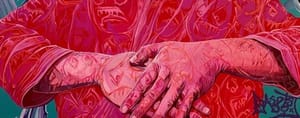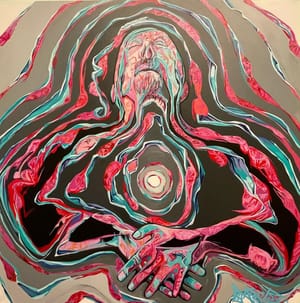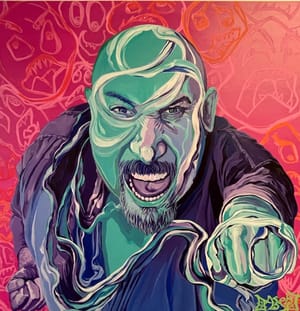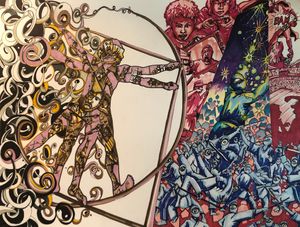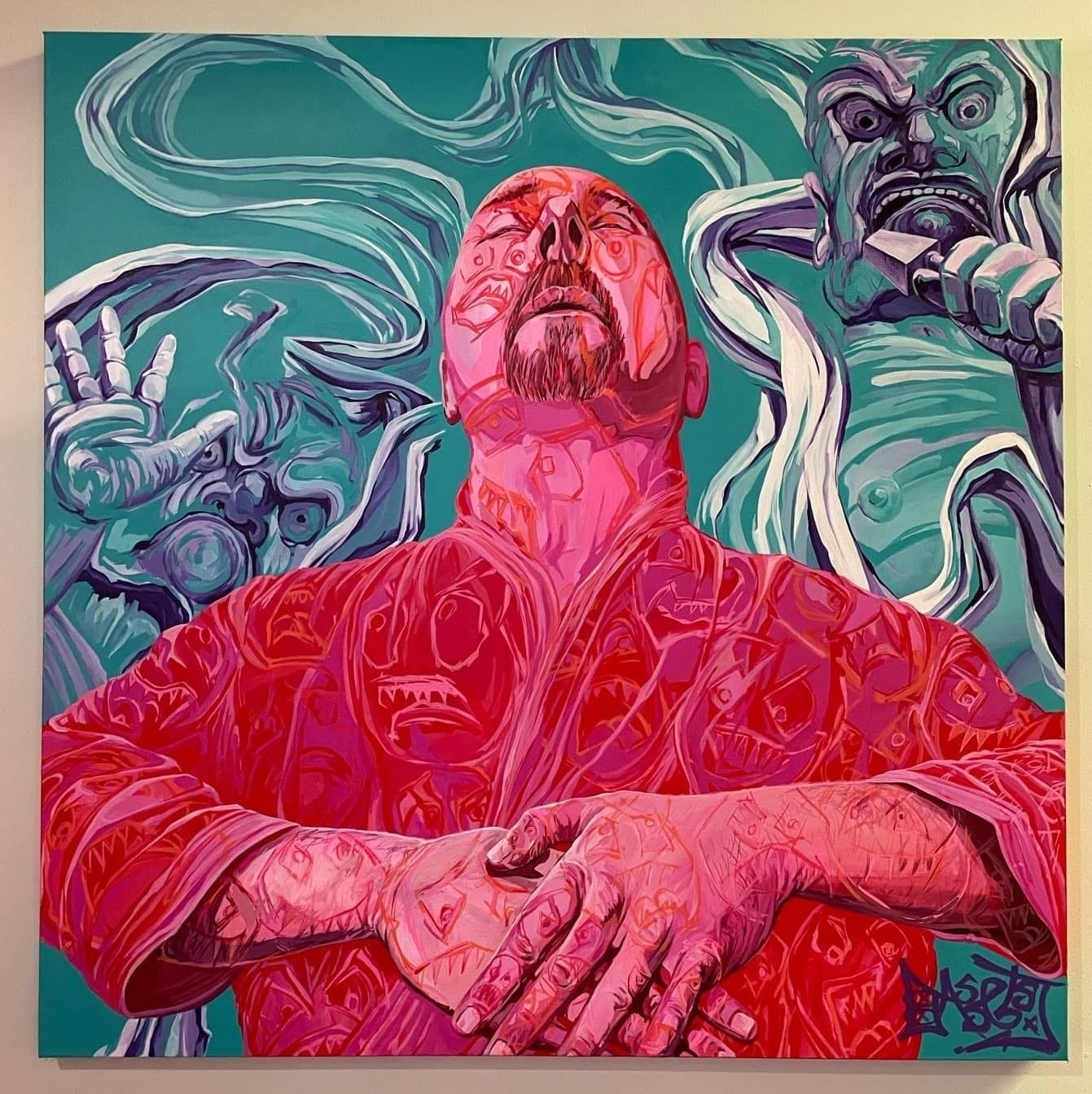
Origin
Tairitsu, as I mentioned in the painting, is a Japanese word that means more than just conflict. It encompasses the experience of conflict as a collision and clashing of opposing forces. The protocol known in karate as mokuso provides a context—a meaning—that divides silence, connects calming, and points toward something greater. I have come to see mokuso as a metaphysical way to become aware of internal struggle, external adversity, and how at this collision point, conflict—familiar to us in the form of a fight and less familiar as a medium—provides an objective view of something that otherwise becomes elusive in subjective terms. Just as a musician's context emerges from the friction of air over a reed, a bow on a string, or a stick striking a drum, we too acquire context of ourselves from the collision of internal and external forces—what we perceive as adversity. Through this medium, we learn to refine what is the instrument of ourselves.
In this way of understanding, mokuso in this painting—and the fighting sequences and patterns called kata that follow—is appraised by the value beyond the refinement we sometimes recognize and sometimes don't in what we see as the absolute: the fight, and nothing more. It becomes a way to mold the medium through features we do recognize in that absolute fighting as an ultimate art, similar to how a musician is molded by the medium of sound through these forces of friction and collision, ultimately to become master of their instrument.
As we, of course, master the instrument within ourselves in our martial context.

